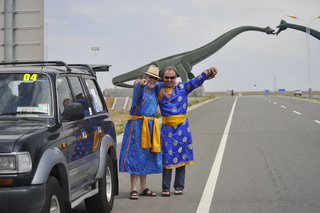
 China Tours
China Tours Tibet Tours
Tibet Tours China Theme Tours
China Theme Tours Off The Beaten Track
Off The Beaten Track Yangtze Cruises
Yangtze Cruises China Trip Planner
China Trip Planner Travel Agents
Travel Agents


We had a wonderful time in Tibet. We have learned a lot about this unique destination because of the wonderful guide Degyi who is so knowledge and always available towards our tours. We stayed at the Shangri-La Hotel Lhasa, and we would never imagine a Tibet travel could be so nice and amazing without the help of Degyi.
Also, thanks a lot to our Tibetan driver Mr.Wongdun for his safe driving and a good sense of service along the way.
We shall return Tibet in the near future!
P.B. and A. A - Europe
Tibet Travel
June 2018 (Private Tibet Journey from Kathmandu)

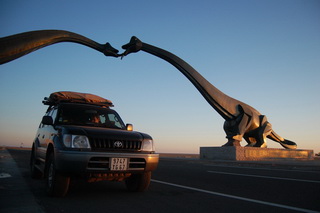 Tour Name: Driving Through China from Mongolia to Laos Tour Name: Driving Through China from Mongolia to Laos Tour Code: M75D358 Duration: 26 Days & 25 Nights Destination: Erenhot, Beijing, Datong, Taiyuan, Pingyao, Luoyang, Xian, Guangyuan, Langzhong Chengdu, Leshan, Mt. Emei, Xichang, Lugu Lake, Lijiang, Dali, Kunming, Jianshui, Yuanyang, Jiangcheng, Jinghong, Mohan, Laos Features: Driving is a perfect way to get to know a country, a huge one like China! China is just more than the Great Wall. This journey from the northern borderland Erenhot to the Chinese and Laotian border town Mohan in the far south Yunnan Province gives you a once in a lifetime experience, driving through this huge country China in terms of land territory and culture diversity. Join us to see the land and its people, to have your own perception of China! Departure Date: You Choose! Tour Price: From $ P.P |
||
|
Itinerary Day By Day: | ||
| Day02 Erenhot - Ulanqab (B, L, D) 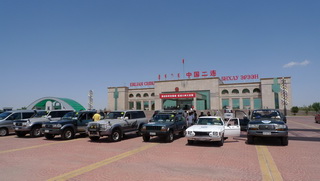 This morning you will leave some time for vehicle check and temporary diver's license and vehicle plate etc. Then you will drive southwards to Ulanqab (Jining Town). Overnight at a local hotel | ||
| Day03 Ulanqab - Beijing (B, L, D) Drive cross the ancient Great Wall to Beijing, the Chinese capital. Overnight at Jianguo Hotel Beijing | ||
| Day04 Beijing (B, L, D) 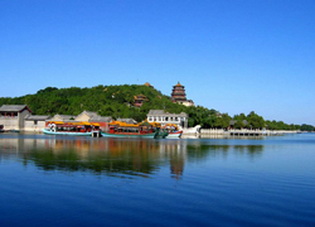 Enjoy your buffet breakfast at your hotel. Today you will have a day leisure tour in Beijing to visit the Tiananmen Square, Forbidden City and the Summer Palace. Tiananmen Square is probably the biggest one of its kind in the world. From here you will go on to the Forbidden City (also known officially as the Imperial Palace Museum ) was commissioned by the third Emperor of the Ming Dynasty, Emperor Yong Le. The palace was built between 1406 and 1420, but was burnt down, rebuilt, sacked and renovated countless times, so most of the architecture you can see today dates from the 1700's and on wards. The Forbidden City was the seat of Imperial power for 500 years, and is now a major tourist attraction in China. Located at the northwest suburb of Beijing, the Summer Palace was originally a royal garden and a temporary dwelling palace for emperors of Qing Dynasty, Its predecessor was the Garden of Clear Ripples (Qingyiyuan) started in 1750 and burned down by the British and French allied troops in 1860. In 1886, Empress Dowager Cixi used navy outlays and other funds in the reconstruction and renamed the park as Summer Palace in 1888.The Summer Palace in northwest suburban Beijing is the largest and most complete imperial garden existing in China. Overnight at Jianguo Hotel Beijing | ||
| Day05 Beijing - Datong (B, L, D) 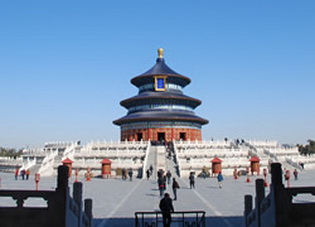 Drive to the Temple of Heaven to watch the morning Tai Chi exercise by the locals, drive through the Great Wall at Badaling to Datong and on arrival visit Yungang Grottos. Yungang Grottoes, are ancient Buddhist temple grottoes near the city of Datong in northern China's Shanxi Province. The four main sites in China that are famous for their stone sculpture are Dunhuang, Longmen, Yungang and Dazu. Among these, the Yungang grottoes are considered first among equals, for their tremendous size, their ancient history, and their relatively complete state of preservation. In 2001 the site was listed as an UNESCO World Cultural Heritage Site. Besides, you will also visit Huayan Temple and the Nine-Dragon-Wall, one of the four nine-dragon-screen-walls in China. Overnight at Datong Garden Hotel | ||
| Day06 Datong - Taiyuan (B, L, D) 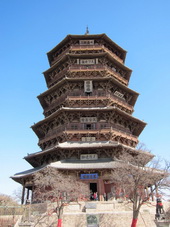 Today you will head for Mt.Wutai. On your way you will visit the Hanging Temple in Hunyuan County and the Wooden Pagoda in Yingxian County. The Hanging Temple is an architectural wonder. It was built on a cliff face. The building complex was built on the base of the natural hollows and outcrops along the contour of the cliff. Over 40 halls, cabinets and pavilions within an area of 152.5 square meters are connected each other by corridors, bridges, boardwalks. They are evenly distributed and well balanced in height. The Wooden Pagoda is another must-see attraction for any tours to Datong. The Pagoda, built completely of timber, and standing 67.31 meters high, is the only extant large wooden pagoda in China and also the tallest among ancient wooden buildings of the world. Drive south to Taiyuan. Overnight at Shanxi Grand Hotel | ||
| Day07 Taiyuan - Pingyao (B, L, d) 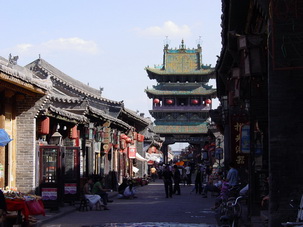 Drive to Pingyao today. A relaxed driving today, enjoy the countryside landscapes in North China. On the way at Taiyuan you will visit Jin Ci (Jin Ancestral Temple), a good combination of historical cultural relics and beautiful landscapes. The welcoming boughs of a multitude of ancient trees provide an amazing entrance to the temple. Beyond this, the numerous halls, cabinets, pavilions and bridges are guaranteed to keep any visitor enthralled. You shall also make a stop at the Qiao Family Compound on the way. Later in the afternoon you will arrive Pingyao, the ancient town. Overnight at De Chao Ge Hotel | ||
| Day08 Pingyao - Luoyang (B, L, D) 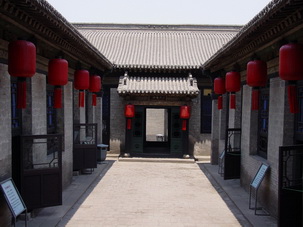 You will visit Ancient City Wall, Ming-Qing Street, Yamen, Shuanglin Monastery and Wang Family Compound. Pingyao Ancient Town is an ancient county typical of rural counties in North China, simple and steeped in ancient tradition. The Old Town of Pingyao was constructed according to the traditional planning and building style of the Han ethnic group and was laid out according to the functions of its different parts. Four large streets, eight smaller ones, and 72 lanes made a neat grid. Symmetrically arranged along an axis, the private houses were constructed either in the style of courtyard houses or in the style of manmade-cave houses, all with local features. In the afternoon you will drive to Luoyang City in China's central part of Henan Province. Overnight at Peony Plaza Hotel | ||
| Day09 Luoyang (B, L, D) 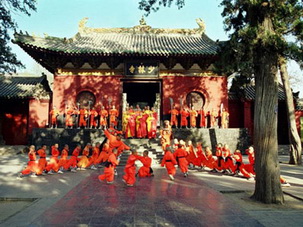 Today's activity will be at Dengfeng for its renowned Shaolin Temple and Songyang Academy. Founded in AD 496 during the Northern Wei dynasty, the Shaolin Temple was built in honor of an Indian monk called Bodhidharma (known to the Chinese as Da Mo), founder of the Mahayana sect of Buddhism or more popularly known as Chinese Chan (or Zen) Buddhism. This temple is therefore regarded as the birthplace of Chinese Buddhism. The temple, which bore witness to the rise and fall of several dynasties, is also famous for its Martial Arts (Kung Fu). Shaolin Kung Fu is the product of the synthesis of other martial arts principles into a distinctive martial art style. Besides, visit to the ancient Songyang Academy, located at the foot of Mt.Song Shan (Song Shan Mountain), which is one of the four most famous institutions of higher education in ancient China. Overnight at Peony Plaza Hotel | ||
| Day10 Luoyang - Xian (B, L, D) 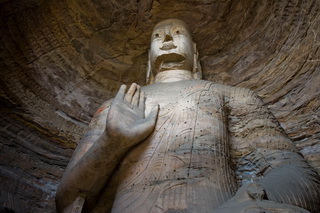 In the morning we drive to visit one of the important destination in the area, the Longmen Grottos. Longman Grottoes, located 13 Km to the south of Luoyang, are a treasure house of ancient Buddhist cave art. The grottos were hewed and carved during the Northern Wei Dynasty (386-534), when the rulers relocated their capital at Luoyang near the end of the 5th century. At that time Buddhism was spreading east into China and was venerated by the imperial court. The Buddhists adopted the practice of carving rock temples, dedicated to the Buddha. Then you will drive to Xi'an, one of China's ancient capitals. Overnight at Grand New World Hotel | ||
| Day11 Xian (B, L, D) 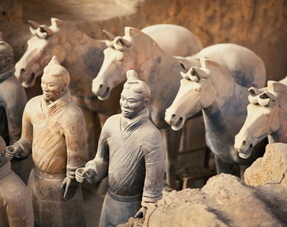 Your Xian tour begins with the mighty Terra Cotta Warriors and Horses. Discovered in 1974, Xian Terra Cotta Warriors and Horses Site is one of the most important archaeological finds in the 20th century. In a vault of approximately 12,000m2 and 5m underground lay some 8,000 terracotta infantry soldiers, archers, cavalrymen and chariots arranged in battle formation, ready to defend their emperor's immortal soul. After the visit you will have a very good local lunch at a graceful restaurant. Then you will head back town and visit the Big Wild Goose Pagoda. Situated inside Ci'en Temple (4 kilometers south of Xi'an City), it is one of the famous Buddhist pagodas in China. Sponsored by Tang Emperor Gaozong (628-683, reigned 650-683), the temple was first built in 652 during the Tang Dynasty as a symbol of thanksgiving to his mother for her kindness who had suffered an early death. Overnight at Grand New World Hotel | ||
| Day12 Xian - Guangyuan (B, L, D) 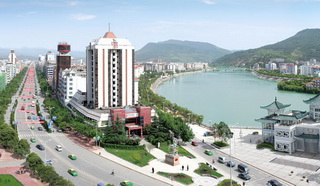 Drive through the Hanzhong Plain to Sichuan's Guangyuan City nestled by the Jialing River, one tributary of the mighty Yangtze River. Overnight at a local hotel | ||
| Day13 Guangyuan - Langzhong (B, L, D) 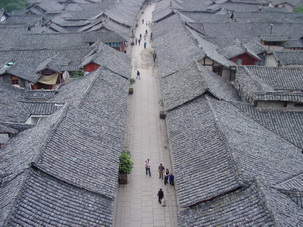 Winding the way on back road to Langzhong, a scenic town sitting between mountains and waters. On arrival you will have a walk in the Old Town of Langzhong. Surrounded by the Jialing River and beautiful mountain, Langzhong was hailed as a fairy land with enchanting scenery. Today the ancient county has still kept over hundreds of ancient streets, lanes and courtyards, as well as over twenty attractions in Tang and Song dynasty styles, covering an area of nearly 2 square kilometers. It has been reputed to be the "treasure of Chinese folk architecture". The Baba Temple is located on a small hill beyond the bus station of the County is known as the "Mecca of Oriental". You can also visit China's largest and best-preserved examination house of Qing Dynasty in Sichuan Province, the only folk Feng Shui museum in China and other excellent relics of ancient times. Overnight at a local hotel | ||
| Day14 Langzhong - Chengdu (B, L, D) 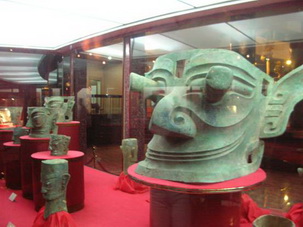 You will drive to Chengdu via Sandingdui Ruins in Guanghan. Sanxingdui is the name of an archaeological site and its deduced culture in China, now believed to be the site of an ancient Chinese city. The Sanxingdui Ruins, lying at Nanxing Town, Guanghan City in the north of the Chengdu plains, Sichuan is 8 kilometers to the west part of Guanghan proper. Sanxingdui archaeological site has gained much renown throughout the world as the center of a prehistoric culture with a sophisticated bronze technology. These people shared the Sichuan Basin with elephants and rhinoceros 3,500 years ago. The bronze masks, golden bird images and jade artifacts which they crafted and buried in the sacrificial pits of Sanxingdui are enigmatic and unique. Overnight at Buddha Zen Hotel | ||
| Day15 Chengdu - Mt.Emei (B, L, D) 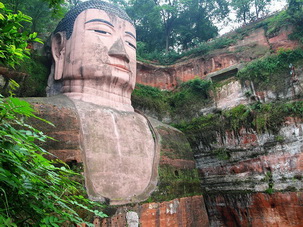 Today you will make a trip to famous Leshan Giant Buddha Statue. Leshan Giant Buddha is the largest Buddha in the world, about 71 meters high. It is a statue of Maitreya (a Bodhisattva usually represented as a very stout monk with a broad smile on his face and with his naked breast and paunch exposed to view) in sitting posture. It started to be carved in 713 A.D and finished 90 years later. Facing the river, the Buddha has symmetrical posture and looks which have been beautifully captured in its solemn stillness. It has three-meter-long (about 11 feet) fingers. The eight-meter-long (about 27 feet) instep is big enough for one hundred people to sit on and the 28-meter-wide (about 92 feet) shoulder is large enough to be a basketball playground. Drive to Emei Shan (Mt.Emei) later of the day. Overnight at Hongzhushan Hotel | ||
| Day16 Mt.Emei (B, L, D) 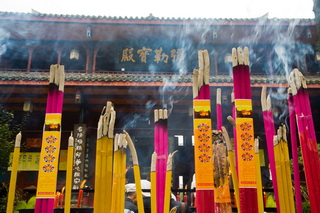 A full day guided tour on Mt.Emei. Table green car and cable ride up to the Golden Summit of Mt.Emei, see monkeys en route, admire gilded statue of Samantabhadra Bodhisattva on the mountain top. Mount Emei (Emeishan) lies 170km southwest of Chengdu is one of the four mountain ranges in China that Buddhists consider sacred. Together with Leshan Giant Buddha, Mt. Emei was included in the UNESCO world heritage list in 1996. The mountain stretches more than 200 kilometers from south to north. Its main peak, Wanfo Summit, is 3,099 meters above sea level. Since ancient times Emei Mountain has been described as "Beauty Under Heaven". Temples were built as early as the Eastern Han Dynasty (25-220) and Buddhism was introduced to the mountain during the Jin Dynasty. In the Ming and Qing dynasties there were more than 150 temples on it. Mt. Emei draws the most attention for its 154-kilometer spread, attracting tourists since ancient times with phenomenal views all the year round. You will take cable car to Wannian Temple (Temple of Longevity), walking through scenic spots of Qingyin Pavilion and One-Thread-Sky etc. Driven back your hotel after the tour. Overnight at Hongzhushan Hotel | ||
| Day17 Mt.Emei - Xichang (B, L, D) 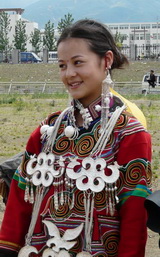 Take a rustic backroad through Mt.Wawu Shan and drive on perfect road to Xichang, a beautiful town nesteld in the green mountains and blue ripples freshwater Qionghai Lake. Overnight at Xichang Minshan Hotel | ||
| Day18 Xichang - Lugu Lake (B, L, D) 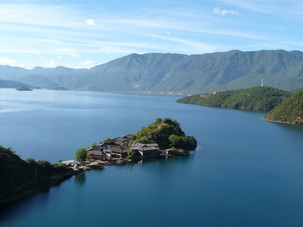 Today you will head for the beautiful Lugu Lake by bus in the morning. You will meet the Mosuo people and feel their unique custom. Dinner will be followed by a bonfire evening party. Lugu Lake is a high mountain plateau lake, 2685 meters above sea level, located 202km northeast of Lijiang on the border of Sichuan and Yunnan. The lake is 48.5 square kilometers and is quite deep, being about 93.5m at its deepest point. It is surrounded by mountains and has eight islands and many bays and beaches. The inhabitants around the lake are the Mosuo people, a small tribe that is considered a sub clan of Naxi people. The Mosuo culture is most frequently described as a matriarchal one. Overnight at Silver Lake Island Hotel | ||
| Day19 Lugu Lake - Lijiang (B, L, D) Today you will have a boat trip to enjoy the charming sights of Lugu Lake. You will visit Island Heiwawudao, Ligedao are metaphorically called 'Three Islands of Ponglai' (Islands of the Immortalsin Chinese mythology). Later of the day you will drive on rugged road to Lijiang. Overnight at Lijiang Wangfu Hotel | ||
| Day20 Lijiang (B, L, D) 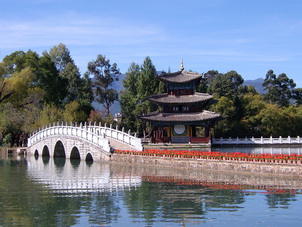 You will have a wonderful day in Lijiang. First of all you will proceed to Jade Dragon Snow Mountain (including round trip cable car up to Spruce Terrace and overlook the Snow Mountain), then you get to Baisha Village to see the ancient fresco painting and visit lama temple Yufeng Si where grows the "king of camellia" . Located 15 km north of Lijiang old town, Jade Dragon Snow Mountain stretches 35 km from north to south with 960-square-kilometers of snow-capped area. Experts say that it has the southernmost glacier in the North Hemisphere. Of all the 13 peaks on the mountain, Shanzidou is the highest with an altitude of 5,596 meters above sea level. Looking from afar, you can see that the mountain just looks like a huge dragon lying in the cloud. Jade Dragon Snow Mountain is the holy mountain - "God of Sanduo" of Naxi people. Transferred back your hotel in the old town. On your way back to your hotel you will learn more about Lijiang and the Naxi people at the Dongba Culture Museum. Overnight at Lijiang Wangfu Hotel | ||
| Day21 Lijiang - Dali (B, L, D) 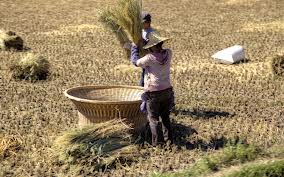 Leave for Shaxi Old Town on the ancient Tea and Horse Caravan Road, en route to Shaxi visit Stone Grottoes on ShiBao Shan Mountain in Jinchuan. Shaxi is an ancient town on the famous Tea and Horse Caravan Road linking Yunnan and Tibet. Then you will drive to Dali. Overnight at Landscape Hotel | ||
| Day22 Dali (B, L, D) 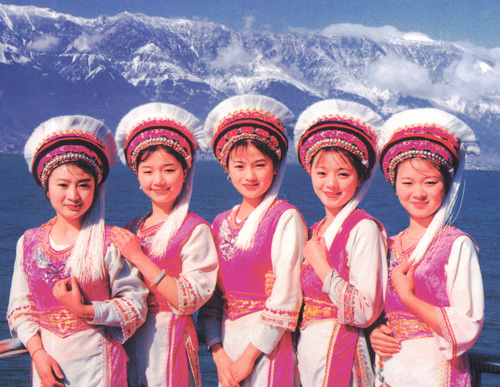 You will have a boat ride on the Erhai Lake, visit Three Pagodas in the Chongsheng Temple and stroll in the Dali Old Town. With an altitude of 1972 meters above sea level, Erhai Lake is a beautiful highland lake of Yunnan Province and one of the seven largest fresh water lakes in China. Three Pagodas is a symbol of the history of Dali City, and a record of the development of Buddhism in the area. As its name implies, Three Pagodas are made of three ancient independent pagodas forming a symmetrical triangle. Dali Old Town, also called Yeyu City, Forbidden City, Zhonghezhen, lies 3 kilometers north from Xiaguan, the capital of Dali Prefecture. Embracing Erhai Lake in the east and adjoining Cangshan Mountain in the west, Dali City was first established in the early period of the Ming Dynasty. You will make a trip to see the local residential houses at Xizhou. Overnight at Landscape Hotel | ||
| Day23 Dali - Lincang (B, L, D) 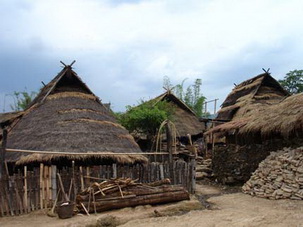 Drive south to Lincang, a city by the Chinese Mekong (Langcang River). Stops will be made during several villages. Overnight at a local hotel | ||
| Day24 Lincang - Jinghong (B, L, D)  Enjoy your driving through lush valleys to Jinghong and in the afternoon head out to Jinghong (Xishuangbanna). With an area of 7,003 square kilometers and a population of 310,000 people, Xishuangbanna is situated in the southern tip of Yunnan on the borders of Myanmar and Laos. It is a place characterized by tropical scenery, rich and unique ethnic customs and habits. Jinghong is the capital city of Xishuangbanna Dai Minority Autonomous Prefecture. Overnight at Dai Garden Hotel | ||
| Day25 Jinghong - Mengla (B, L, D)  Explore the tropical Xishuangbannan area, drive to Mengla and en route visit the Tropical Botanical Garden. Xishuangbanna Tropical Botanical Garden. Situated 103 kilometers, or 3 hour ride, from Jinghong, the Tropical Botanical Garden was founded in 1958 and is currently playing an important role in research in the areas of medicinal plants, taxonomy, economic plants and biochemistry. This garden proudly holds 3,000 species of plants, one of the richest botanical concentrations all over the world. Overnight at a local hotel | ||
| Day26 Mohan (B) Drive to the border and get into Laos, driving ends in China. | ||
| Tour costing varies upon group size, travel season and hotel accommodation levels etc. For price details please email us at info@splendidchinatours.com. Price inclusions: | ||
China Trip Planner | Travel Agents | About Us | Why Us | Contact Us | How to Pay | How to Book - Terms & Conditions | Site Map
Copyright © 2010 - 2030 All Rights Reserved.


 0086-28-85711328
0086-28-85711328 0086-28-85546015
0086-28-85546015






